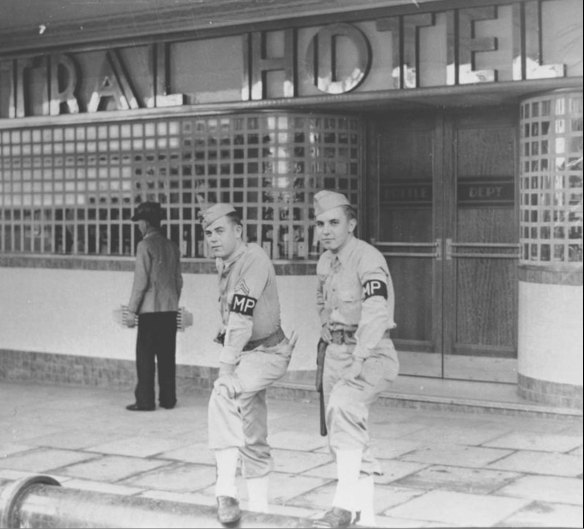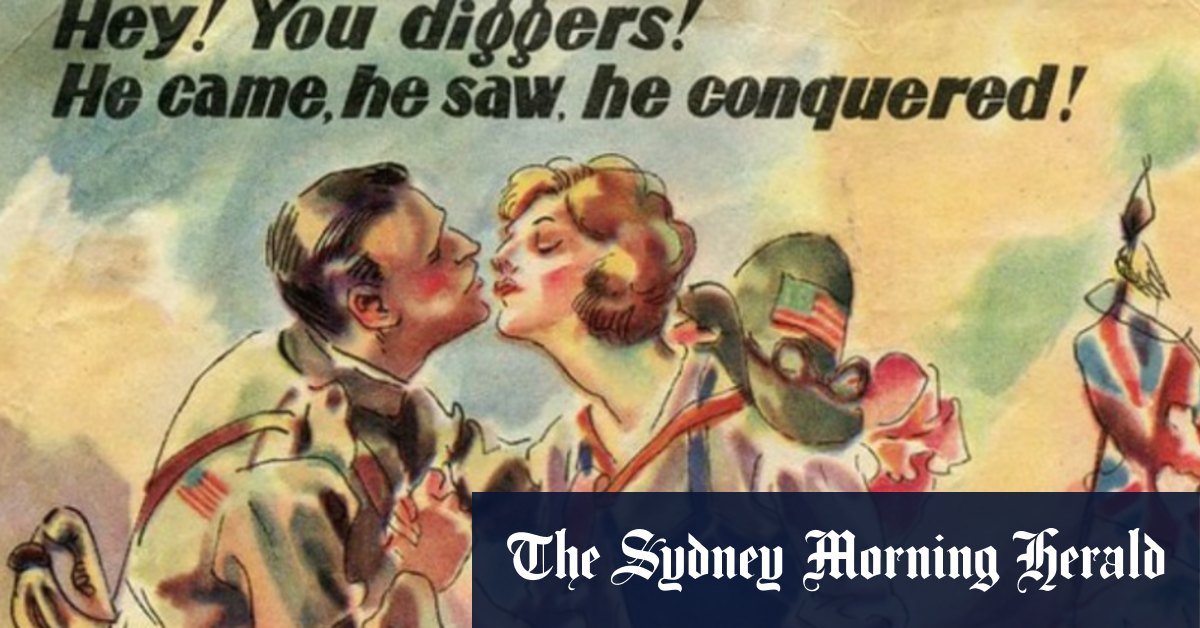[
The American Red Cross Service Club on one corner had roasted 200 turkeys, which were taken across Creek Street to Primac House.
In that brick building was the US post military exchange – including a luxury goods store with alcohol, stockings, chocolates, hot chicken and cigarettes for US troops only.
The American Red Cross Service Club on the corner of Adelaide and Creek streets in 1942.Credit: Brisbane City Council
Not far away on Adelaide Street, in a brick building with white stripes now known as Desmond Chambers, was the “Australian Wet Mess” – essentially a wartime pub for Australian troops.
Australian troops were paid half what Americans were paid. The “Yanks” were viewed by Australian women as more sophisticated and more polite. The Diggers hated this, deriding the Americans as “overpaid, over-sexed, and over here”.
“They were very jealous, and it just erupted,” Norman said.
The incident that sparked the violence involved an American military policeman, or MP, asking a US serviceman, which military records name as Private James R Stein, to show his pass.

US military police guard Brisbane’s Central Hotel during the Second World War.Credit: John Oxley Library
Stein, who had been drinking, fumbled to find his pass, and two or three Australian soldiers hassled the MP, who thought Stein was AWOL – absent without leave – and arrested him.
“A group of Australian soldiers who witnessed the event defended Stein by shouting, ‘Leave our mate alone. Give him back his pass. Provo bastards!’” military history authors Peter Thompson and Robert Macklin wrote.
“As the MP raised his baton to threaten them, the Australian soldiers rush him, inciting a brawl between American MPs and Australian troops.”
More US military police arrived, and used batons to beat the Australians who had besieged the Adelaide and Creek street entrance to Primac House.
Australian war correspondent John Hinde described it as “the most furious battle I ever saw during the war … it was like a civil war”.
War historian Dudley McCarthy believes the events highlighted differences in the culture of the two countries, whose alliance has nevertheless survived the years since then.
“It is probably a fair generalisation to say that in the United States, the display of batons and firearms in the hands of police is an effective way of quelling a riot, whereas in Australia it is an effective way of starting one.”







